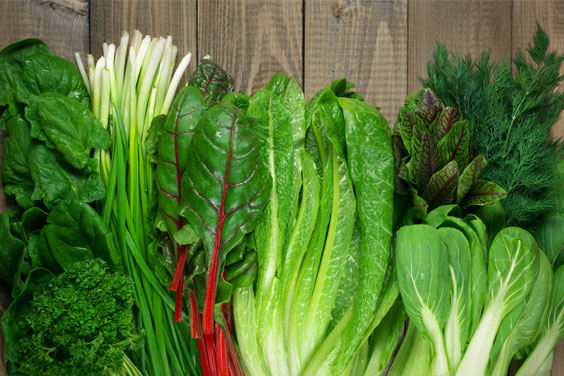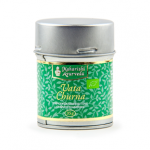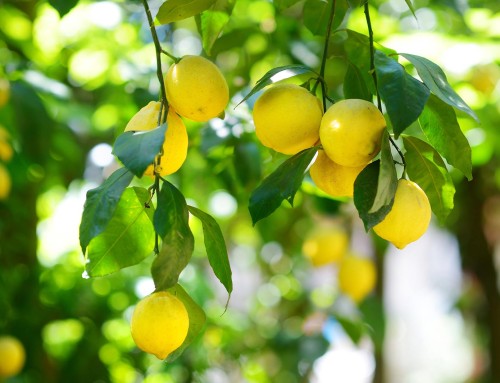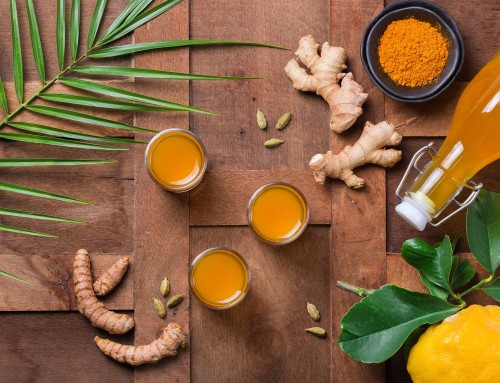Healing Greens 101: An Ayurvedic Perspective
by vpk by Maharishi Ayurveda on February 21, 2018

No longer just a frilly garnish, kale is taking the culinary world by storm. Along with it, leafy greens like spinach, chard, and even collards and turnip greens are gracing plates everywhere from fine dining hotspots to fast food restaurants across the country.
These nutrient-packed veggies have long played a starring role in Ayurvedic cooking, and with good reason. They’re hydrating, nutrient-rich, and when prepared while fresh, they contain prana, or life-supporting energy. Below, we’ll share both Ayurvedic and nutritional insights on leafy greens, along with tasty ways to incorporate them into your daily diet.

Greens Are Good for You
From a nutritional perspective, leafy greens are excellent sources of antioxidant vitamins A and C, and they also provide vitamin E, folic acid, vitamin K, iron, calcium, magnesium, and fiber. They’re low in calories, and many varieties—especially the cruciferous (cabbage) family—contain unique enzymes that have been associated with supporting the immune system.
Ayurvedic vaidyas (experts) regularly prescribe a daily dose of leafy greens, because they’re good for your skin, hair, and for removing amavisha (toxic wastes) from the body. The human body is about 60 percent water, and leafy greens help purify your shrotas (the subtle channels of the body) and replenish your inner hydration stores.

Get to Know Your Greens
Often called “bitter greens” because of their dominant taste, greens have nuanced flavours. Some are a bit sweet (bok choy), pungent (arugula, mustard greens) or sour (sorrel). Generally speaking, greens are either tender with a mild flavour (spinach, chard, and bok choy), or hardy with a strong flavour (kale, collards, mustard greens, arugula, dandelion, sorrel and turnip greens). There’s also the cabbage family, whose members are characterized by that tell-tale sulfurous smell when cooked. Relatives include kale, collards, bok choy, Brussels sprouts and a variety of cabbages.

A Guide to Greens and Dosha Types
Leafy greens are both nourishing and detoxifying, so it’s important to choose both varieties and cooking times according to your dosha and any current imbalances.

KAPHA body types or people with a Kapha imbalance can consume all varieties (unless your colon is sensitive to greens). Greens are best when well-cooked with spices suitable to your individual needs and tastes. But if you like your greens raw, Kapha-dominant types are the folks to enjoy them uncooked and have the best chance to reap their benefits. That slow, Kapha coal-fire digestion can handle them uncooked, but nevertheless watch for signs of weak digestion, such as gas or increased Vata.

PITTA people or those with Pitta imbalances can use Pitta-pacifying spices and add white daikon radish when preparing their greens. Tender sweet greens are more compatible with this dosha than hardy sour ones. Again, well-cooked veggies are preferred in Ayurveda, as the Vaidyas tell us that bioavailability of their benefits is increased significantly when our veggies are heated, softened and easier to digest.

VATA people also do better with tender varieties that are sour in nature, and should try to eat fewer greens, especially in Vata season (winter). To minimize Vata aggravation, chop the greens finely and cook well with Vata-pacifying spices. Cabbages can also aggravate Vata, so they should always be cooked well with Vata-pacifying spices and eaten in moderation. In general, for Vata types, well cooked is the watchword. Vatas are much more susceptible to having their physiology put out of balance by raw foods.
Words to the wise: since most greens have Vata qualities, it’s ideal to eat more of them in Pitta and Kapha seasons, from March through October. Some greens are more detoxifying than others. Ask your Ayurvedic expert to recommend greens that are suitable for you.
Listening to your body is always key. If eating greens gives you gas or bloating, this is a sure sign of increased Vata. Eating greens at lunch when digestion is the strongest can help give you the digesting edge if you find your digestion is weaker.

Picking and Prepping Leafy Greens
When shopping for greens, look for crisp leaves with a fresh, green colour. Choose organic produce to avoid pesticide residues. Try to eat seasonally, if you can.
Collards, kale, turnip greens and mustard greens are in season from October through early spring, whereas Swiss chard and beet greens grow from spring through fall. Dandelion greens are best in spring and summer, and can aid detoxification. Tender, delicate leaves go bad quickly, so it’s best to use them as soon as possible. The ideal way to wash greens is to “bathe” them in a sink full of water several times. Remove hard stems and stalks before cooking. If the stalks are soft, you can cook them with the leaves.
Tender leaves like spinach and chard need only a few minutes to cook, but hardier ones can take up to 30 minutes. When cooking from recipes, keep in mind that they cook down considerably, to one-quarter or less. Chop leaves either before or after cooking. The easiest way to prepare greens is to cook or steam them, then sauté in ghee with spices for a few minutes. You can also cook chopped leaves in your dhal, soups, grains or with other vegetables, or use them in vegetable pies and stuffed-vegetables recipes.
Avoid cooking greens in aluminum or copper pans, because they react with the sulfur compounds in the vegetables to create unpleasant odors and flavours, which can result in a loss of the vitamin content.
In addition to their nutritional value, leafy greens can add a whole new flavour and colour to your meals!
Vata Aromatic Seasoning is an aromatic and tangy blend suitable for use on Vata increasing food such as cabbage, broccoli, corn, grains and salads.
Spices are not just great flavour-enhancers, they come with therapeutic properties as well.
Maharishi AyurVeda Churnas are precise blends of spices and seasonings that include all six Ayurvedic tastes.
Disclaimer The sole purpose of these articles is to provide information about the tradition of ayurveda. This information is not intended for use in the diagnosis, treatment, cure or prevention of any disease. If you have any serious acute or chronic health concern, please consult a trained health professional who can fully assess your needs and address them effectively. If you are seeking the medical advice of a trained ayurvedic expert, call or e-mail us for the number of a physician in your area. Check with your doctor before taking herbs or using essential oils when pregnant or nursing.






